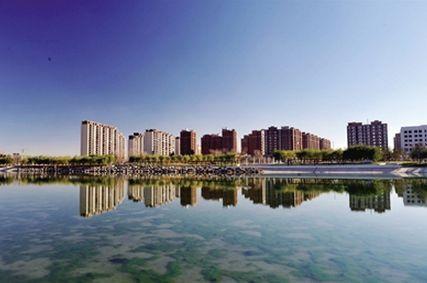Quenching Hohhot's thirst with recycled water

The recycled water has been widely used for things such as afforestation and industry in Hohhot, North China's Inner Mongolia autonomous region.[Photo/People's Daily]
Hohhot in North China's Inner Mongolia autonomous region has been implementing an innovative solution to its water shortage problem since the heating period ended on April 15.
Water is scarce in Hohhot year-round, and for years, the local government has tried to expand the water supply by searching for alternative sources.
One effective method has been to treat and recycle wastewater. The recycled water is highly purified, though perhaps not as pristine as drinking water, and may be the key to irrigating crops and afforested plants.
The Xinxinban Wastewater Treatment Plant, established in 1982, was the first plant of its kind in the city, and has a daily sewage treatment capacity of 50,000 tons.
Due to the increasing demand for wastewater treatment, Hohhot has built four new plants over the past several years.
Gao Haoqing, a general manager at the Chunhua Wastewater Treatment Plant, said that 520,000 tons of wastewater are treated in the city every day.
Statistics show that the city's five plants produced a total of 380,000 tons of recycled water every day in 2018. The recycled water has been widely used for things such as afforestation and industry.
Last year, the city used 69.98 million tons of recycled water. According to the local government, the utilization rate of recycled water has hit 50 percent, higher than the national average.
Pipelines for recycled water stretch 158 kilometers across the city, and the pipeline network covers several landscape rivers.
A total of 150 recycled water supply points have been established in the city, and according to the government, the city will continue to improve its pipeline network and supply points for recycled water and increase investment in the area.





